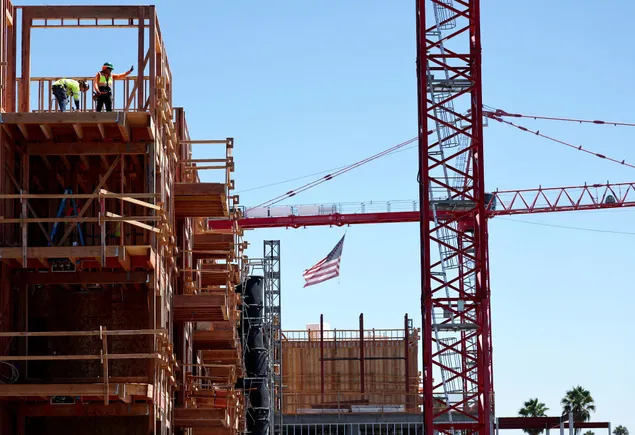Dive Brief:
- Nonresidential construction spending ticked up 0.1% again in September to a seasonally adjusted annual rate of $1.22 trillion, according to Associated Builders and Contractors’ analysis of U.S. Census Bureau data released Friday.
- Public sector projects — up 0.4% in September — drove momentum, while private nonresidential dipped by 0.1%, according to the report.
- “Construction spending inched higher in September, with growth fueled by ongoing infrastructure investment,” said Anirban Basu, ABC chief economist, in the release. “Spending accelerated in several publicly funded segments in September, including highway and street, sewage, waste disposal and water supply.”
Dive Insight:
Spending rose across most infrastructure segments, said Ken Simonson, chief economist at the Associated General Contractors of America.
For example, spending on highway and street construction hit $141.95 billion in September, up 1.5% over the past 12 months, while expenditures on transportation projects hit $70.13 billion, a 7.2% gain over the past year, according to the data.
In other words, federal infrastructure funding continues to buoy overall construction spending, with public sector investments offsetting slowdowns in private projects.
That largely reflects economic pressures on the private sector, where high borrowing costs and tight credit conditions continue to limit new developments.
Over the past year, public spending has consistently outpaced private investment, according to U.S. Census Bureau data. Public spending has jumped 7% over the past 12 months, while private spending has edged up by 3.5%.
But optimism still exists for a private sector rebound, said Basu.
“Despite September’s decline, private nonresidential construction spending remains less than 1% below the all-time high established in June,” said Basu. “Given ongoing manufacturing megaprojects and healthy backlog levels, according to ABC’s Construction Backlog Indicator, the nonresidential segment should hold up well as the industry waits for lower borrowing costs and looser lending standards to arrive.”
For example, data center construction spending increased 0.6% for the month and about 48% over the past 12 months, noted Simonson.
Spending increased on a monthly basis in half of the 16 nonresidential subcategories, according to ABC. Expenditures on manufacturing construction hit $235.35 billion in September, up about 20.5% for the year. Meanwhile, spending on commercial construction, such as retail and warehouse projects, ticked down to $125.3 billion in September, about a 13.3% drop for the year, according to the data.

